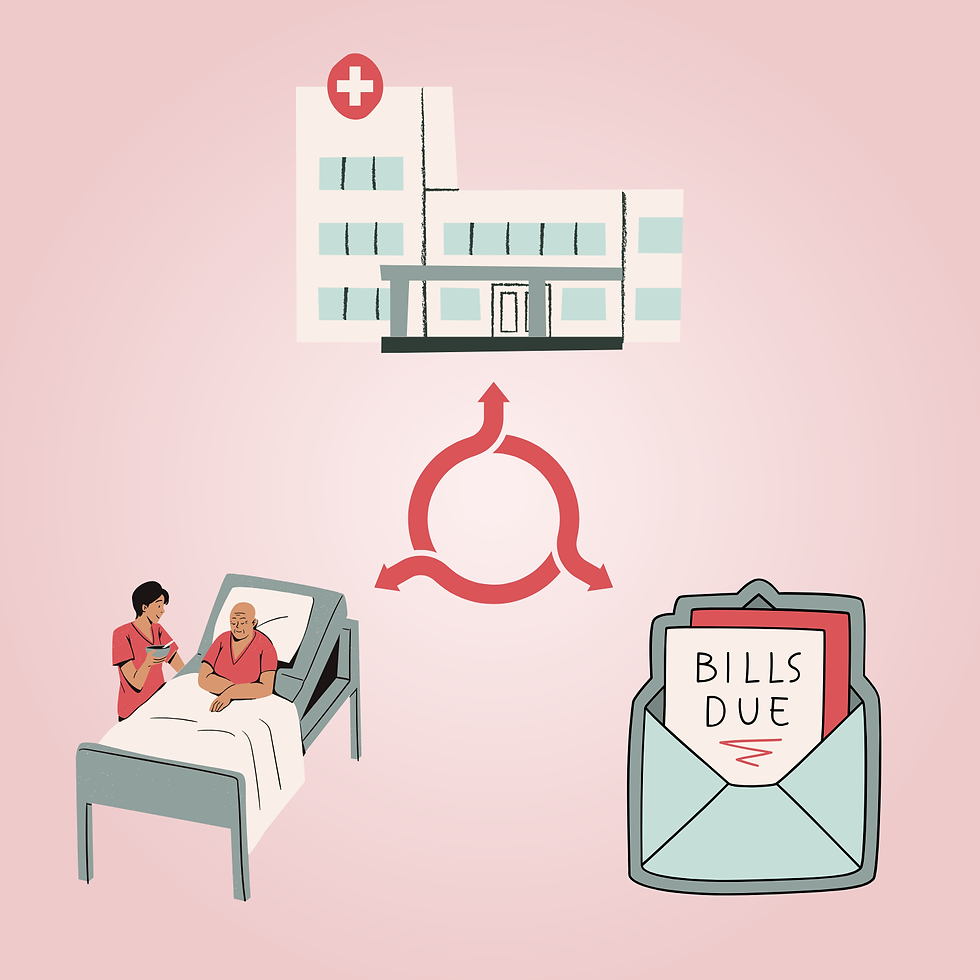Choosing End-of-Life Care: Exploring Options Beyond Hospitals
- Duke Medical Ethics

- Mar 20, 2024
- 2 min read

As our bodies age and mortality looms nearer, many Americans find themselves traveling to the nearest hospital for care. From the 20th century to the 21st century, hospital deaths surged dramatically [1]. However, for the first time in over a century, that trend has reversed. The number of individuals dying in hospitals has decreased, indicating a growing preference for dying at home or in alternative facilities [1].
Why would people opt to die in hospitals to begin with? To be away from their friends, family, and loved ones in their final moments? Perhaps it’s the promise of a cure. The promise of a prolonged life, of more time to do the things that are important, the feeling of not having lived the “best” life possible yet. Perhaps it’s the worry of loved ones having to see them frail and weak, having to burden them as your breath slows and tears form. Perhaps it’s simply the most convenient place. Or perhaps patients simply don’t know that there is another alternative.After all, how many of us think about where we’ll die, or where we want to die if we have a choice?
Beyond hospitals, individuals have a range of choices for end-of-life care, including nursing homes, hospice, and palliative care centers, as well as their own homes. While hospital care may offer more treatment options, non-hospital settings provide comfort, safety, and often more accessible supportive and palliative care. Increasingly, heightened awareness of decision-making in end-of-life care and the rising costs of hospital facilities contribute to this shift towards non-hospital deaths.
Ultimately, the decision between hospital and non-hospital deaths rests with individuals and their loved ones. While not everyone can dictate how they die, for those who can, the choice hinges on what matters most to them during this critical time. Therefore, it's imperative to educate ourselves and our loved ones about end-of-life care options to make informed decisions aligned with our values and preferences. At the end of the day, there is no right or wrong choice, and people must have the resources necessary to choose what is best for them.
Edited By: Radhika Subramani
Designed By: Ariha Mehta
Works Cited
[1] Wachterman MW, Luth EA, Semco RS, Weissman JS. Where Americans Die - Is There Really "No Place Like Home"? N Engl J Med. 2022 Mar 17;386(11):1008-1010.



Comments